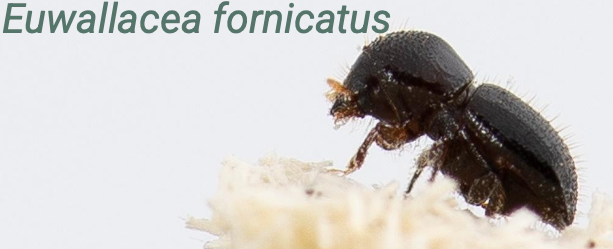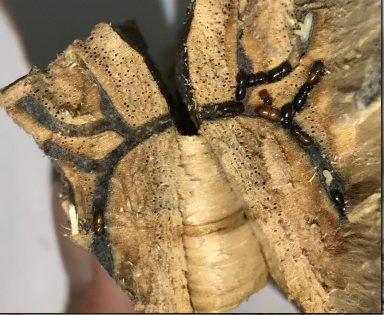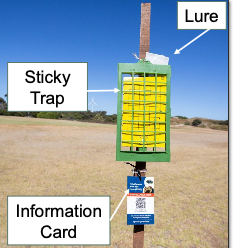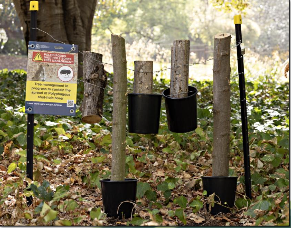Northern Suburbs Branch, 15 April 2025
There is plenty of information around for those that think they maybe affected. That’s what I thought anyway. A conversation with our branch treasurer about DPIRD and the local council visiting her garden a couple of times to investigate, made me aware of how little I did know especially as I live in Zone A.
The opportunity for Courtney Butterworth, Stakeholder and Community Engagement Officer at DPIRD to give a presentation was opportune.
With our meetings falling around Easter and ANZAC Day, a combined meeting with the Northern Suburbs Branch of the Wildflower Society was organised. The added advantage of having tube stock from their Nursery available, some plant id with David Pike and a plant raffle added to the evening.
Courtney presented a well-paced information session covering all the information currently available.


The borer, Euwallacea fornicatus lives in a symbiotic relationship with a fungus, Fusarium species, which infects the xylem of the plant reducing movement of water and nutrients around the plant causing dieback and plant death.
This small borer, approx. 2mm, originally came from S.E. Asia and spread to other parts of the world with similar climates, arriving in Australia in 2021. It was first reported in East Fremantle.
Impacts include the loss of canopy cover in urban environment, potential loss of agricultural crops and loss of habitats. Because many parts of Australia would be suitable for polyphagous shothole borer all states are supporting eradication and DPIRD are running the biosecurity response in WA. There are over 200 plants in WA that would be acceptable hosts for the borer.
Sections of the Perth Metropolitan area are divided into quarantine zones according to the amount of infestation. Zone A cannot move untreated/unseasoned wood bigger than 2.5 cm and plant material bigger than 2cm outside the zone, unless it is chipped to 2.5cm or less, which will kill 99.9% of the borer. Local councils are working with DPIRD.
There is public information sessions like the one Courtney presented, media campaigns and signage. Surveillance and inspections of parks, streets and people’s homes is occurring as well as trapping with an artificial pheromone lure or preferred host logs.


It seems Polyphagous prefers box elder maples (Acer negundo), Robinia (Robinia psuedoacacia) and Flame trees (Erythrina x sykesii). If you have any of these extremely susceptible trees you are asked to notify DPIRD. Moreton bay figs, London plane tress are other favourites, but many of our native trees are also highly susceptible such as the river sheoak (Casuarina cunninghamiana) and Swamp paperbark (Melaleuca rhaphiophylla). Full lists are available on the DPIRD website.
agric.wa.gov.au/borer
Up to the date of our meeting more than 2 million trees had been inspected and almost 5,000 had been removed and more than 1,000 pruned.
They ask that we all educate ourselves and report any observations via app or online mypestguide.agric.wa.gov.au.
Willy Dadour

